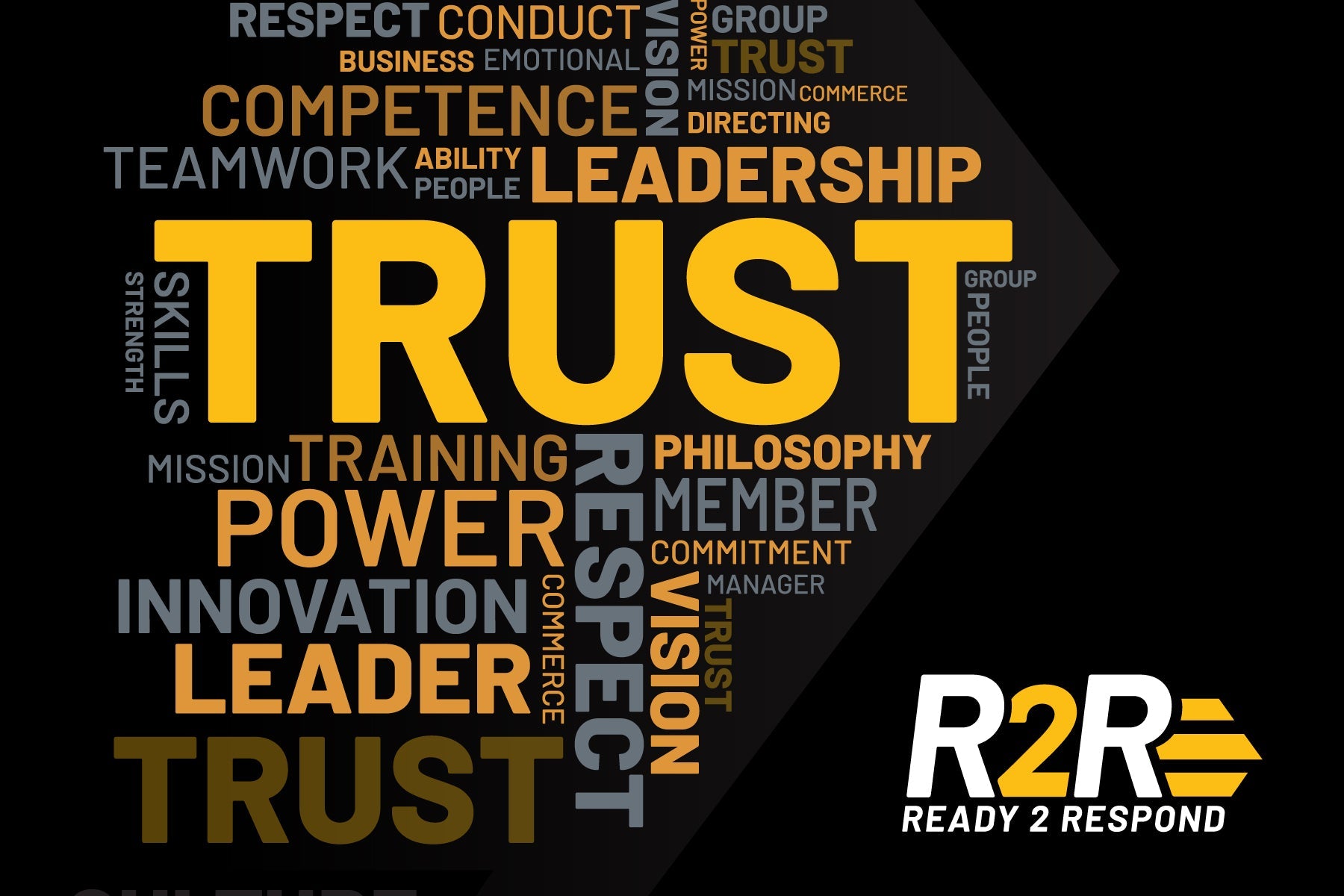By Pat Muller, Ready 2 Respond Trainer
Trust is the backbone of a successful facility management team. Whether overseeing a sprawling university campus, a busy hospital, or a corporate office, facility managers rely on strong team dynamics, open communication, and reliability to ensure smooth operations. When trust is lacking, teams can struggle with miscommunication, low morale, and inefficiencies that slow down critical emergency response times.
A culture of trust isn’t built overnight – it requires intentional leadership, transparency, and consistent follow-through. Here’s how facility managers can create an environment where trust thrives, teams feel empowered, and operations run more smoothly.
1. Foster Clear and Open Communication
Facility teams operate in fast-paced, high-stakes environments where unclear communication can lead to costly mistakes. Regular communication helps teams feel informed and aligned.
- Hold Routine Check-ins: Weekly or biweekly meetings allow teams to discuss ongoing projects, challenges, and improvements.
- Create an Open Feedback Loop: Encourage team members to share insights or voice concerns without fear of backlash.
- Use Centralized Tools: Digital dashboards or shared calendars keep everyone updated on maintenance schedules, emergency plans, and key initiatives.
Put it into action: Implement a work order tracking system to keep teams aligned. With real-time updates, team members can track projects from submission to completion – reducing miscommunication, preventing delays, and ensuring no task falls through the cracks.
2. Lead with Transparency and Accountability
Trust is built when leaders are honest about challenges, upfront about decisions, and accountable for follow-through. Without transparency, it’s easy for rumors, uncertainty, and disengagement to spread.
- Explain Key Decisions: Communicate the rationale behind decisions, whether tactical or budget related.
- Acknowledge Mistakes: Owning up to errors and outlining corrective actions reinforces integrity.
- Encourage Accountability: Leaders who set expectations and hold themselves and their teams accountable create a culture of mutual respect.
Put it into action: Be transparent about budget challenges to build trust and encourage team collaboration. Engage staff in brainstorming cost-effective options – such as managing some water incidents in house to save on third-party contractor costs. When teams feel involved, they are more likely to support budget realities and contribute innovative ideas.
3. Demonstrate Reliability Through Follow-Through
A team’s trust in leadership – and each other – depends on consistency and reliability. Facility teams must know they can count on their peers and supervisors to commit.
- Stick to Timelines: Meeting deadlines builds confidence in leadership.
- Proactively Solve Problems: Addressing issues before they become significant problems reinforces team confidence in leadership.
- Lead by Example: A responsive, engaged, and solution-oriented leader sets the tone for the rest of the team.
Put it into action: Show that equipment maintenance is a priority by implementing a tracking system to monitor routine upkeep and ensure supplies are always restocked. Recognize team members who take initiative in maintaining equipment – everyday acknowledgments go a long way in building trust and accountability.
4. Prioritize Training and Professional Growth
Investing in team development enhances skills and signals that leadership values its employees. When staff feel empowered through training, they are more engaged, confident, and willing to take the initiative.
- Offer Hands-On Training: Ensure teams are well-versed in emergency response, safety protocols, and industry best practices, enlisting the help of third-party experts as needed.
- Support Career Growth: Leadership workshops and cross-training opportunities help employees feel they have a future within the organization.
- Reinforce Emergency Preparedness: Simulated drills for scenarios like water damage and power outages build confidence in handling real incidents.
Put it into action: Run emergency response drills to give staff hands-on experience and build confidence. Simulating a water damage incident – from locating shutoff valves to deploying extraction equipment – ensures teams know their roles and can respond efficiently.
5. Recognize Contributions and Celebrate Successes
A culture of trust thrives on appreciation and acknowledgment. Recognizing team members’ hard work fosters motivation and a sense of purpose.
- Public Recognition: Highlight team successes in department meetings or newsletters.
- Private Acknowledgment: A simple thank-you email or one-on-one recognition can go a long way.
- Tie Work to Larger Impact: Show teams how their efforts directly improve the workplace – whether it’s preventing a business disruption or improving safety.
Put it into action: Recognize and celebrate team contributions to reinforce trust and pride in their work. For example, highlighting team members’ success in containing a water event and minimizing damage ensures that teams feel valued – and motivated to bring their best to the next challenging situation.
Building a Resilient, Trusted Team
Trust in facility management isn’t just about building strong teams – it’s about creating environments where employees feel engaged, valued, and ready to handle challenges. Open communication, transparency, reliability, training, and recognition strengthen team morale and improve efficiency.
Contact R2R for help with implementing customized team training to help boost preparedness and improve collaboration and trust. For drying after water damage tips, follow us on LinkedIn and subscribe to our Facility Insights newsletter.


Share:
Lifting Smart: Ergonomic Techniques for Facility Teams